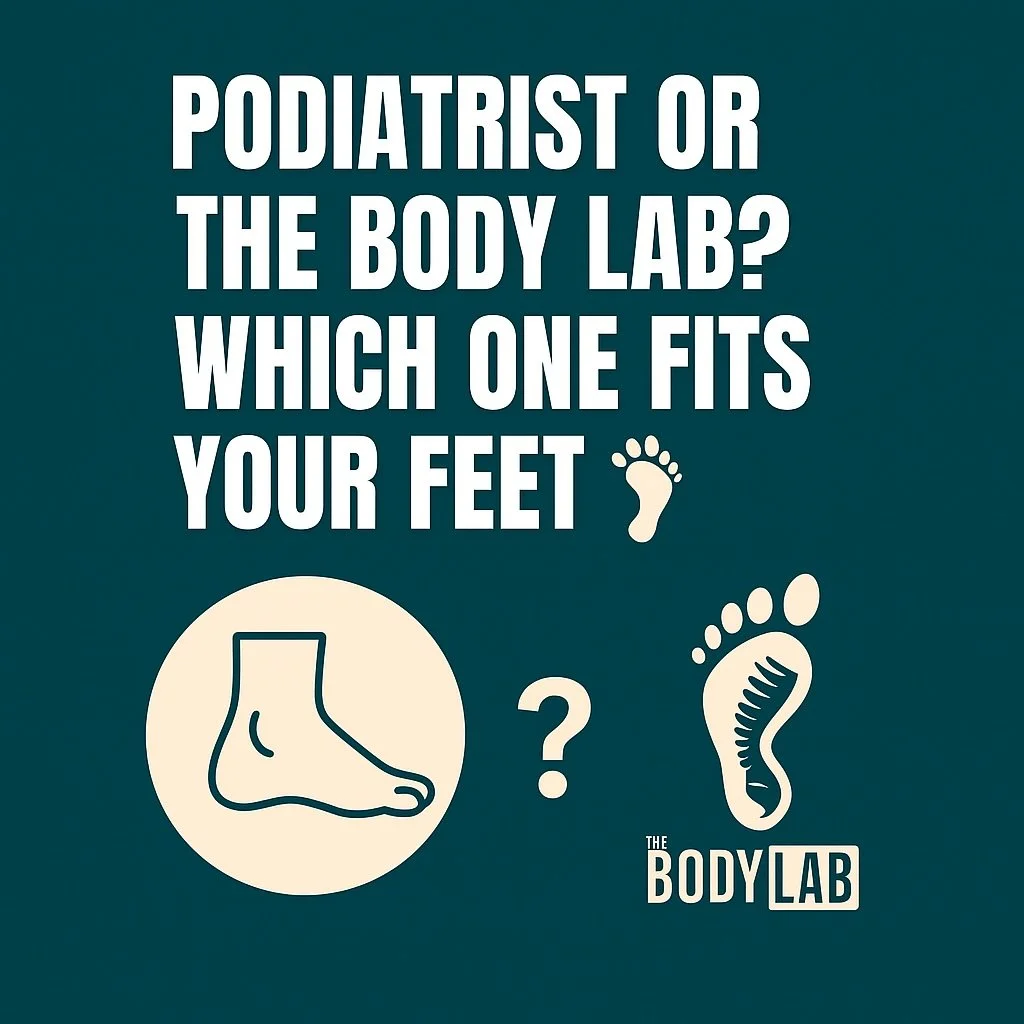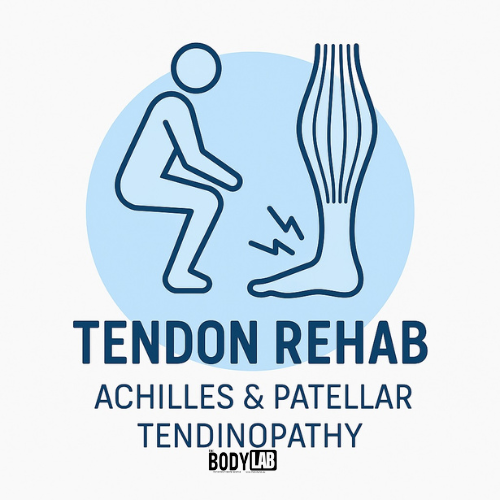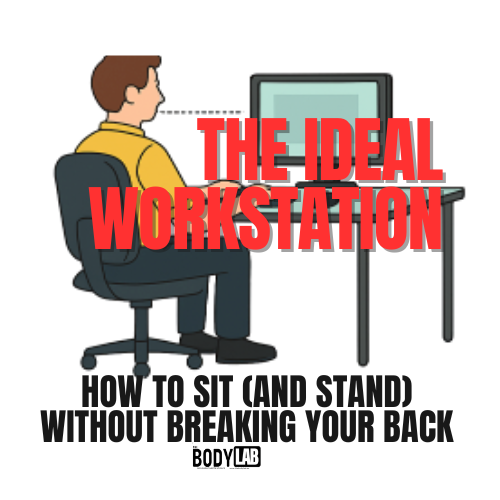Movement Therapy: The Key to Alleviating Back Pain
Movement Therapy @ The Body Lab
Back pain is a common issue that affects people from all walks of life. Whether it’s a persistent dull ache or a sudden sharp pain, back discomfort can significantly disrupt daily activities. In Canberra, many people turn to traditional treatments like physiotherapy, but often find only temporary relief. At The Body Lab, we believe there’s a more comprehensive solution—movement therapy, a method that not only relieves pain but also addresses its root cause for lasting results.
The spine, a marvel of engineering, is tasked with supporting the body while allowing for flexibility and movement. However, when it comes to back pain, the causes can be multifaceted. From poor posture to muscle strains, ligament sprains, or even nerve entrapment, pinpointing the exact issue is crucial for effective treatment. At The Body Lab, we've assisted numerous patients in Canberra with personalised movement therapy programs tailored to address their unique needs.
Why Movement Therapy at The Body Lab Is Different
What sets The Body Lab apart from other therapists and clinics in Canberra is our approach to movement therapy. While traditional treatments often focus on isolated symptoms or passive care, we emphasise active engagement and long-term solutions. Our programs empower clients with the knowledge and tools to take control of their pain by offering an integrative, personalised approach tailored to each individual’s needs.
At the core of our approach is the science of walking gait. We believe that the better you walk, the better you get. Each step becomes part of your healing, and with improved movement patterns, each step provides a sense of relief and progress. Our therapy isn’t just about addressing immediate pain but ensuring that your daily movement is optimized to prevent future issues.
The Science Behind Gait and Walking
Walking is a fundamental human movement, and gait mechanics—how each part of your body moves as you walk—play a critical role in your overall health. Poor gait patterns can lead to back pain, joint strain, and even injury. At The Body Lab, we focus on improving your gait to transform how your body functions. As you correct these patterns, each step helps your body move more efficiently, leading to reduced pain and better overall well-being.
By improving how you walk, you’re not just managing your back pain—you’re actively preventing it. Every step becomes a therapeutic step that reinforces healthy movement patterns. Over time, this leads to lasting relief, as the repetitive motion of walking strengthens muscles, improves alignment, and enhances overall body function.
One common misconception is that back pain is an inevitable part of life. While it's true that many of us will experience back pain at some point, it doesn't have to be a constant companion. By prioritising movement and adopting healthy habits, individuals can mitigate the risk of developing chronic back issues. At The Body Lab, we advocate for a proactive approach to back health, encouraging regular exercise, mindful posture, and proper lifting techniques.
Essentially, getting you moving
and walking better to take the pain away.
When it comes to lower back pain, in particular, understanding the root cause is essential for effective treatment. Whether it's a muscle imbalance, joint dysfunction, or psychosocial factors contributing to the pain experience, our team of movement specialists is equipped to provide personalized care tailored to each individual's needs. Through a combination of manual therapy, targeted exercises, and lifestyle modifications, we empower our clients to take control of their back health and lead active, pain-free lives.
The Body Lab’s Unique Programs
Our programs are built around functional biomechanics, muscle testing, and tailored exercises that address movement dysfunctions at their source. From chronic back pain to mobility issues, we offer comprehensive care designed to meet your specific needs.
The Power of Walking: A Step Toward Relief
At The Body Lab, we believe walking is one of the most powerful tools for pain relief. Each step you take with improved form is a step towards healing. The better you walk, the better you feel—and every step brings relief. Research shows that gait-focused movement therapy can reduce pain, improve mobility, and help prevent future injuries. By correcting the way your body moves during walking, you’re not just treating your pain but actively healing with every stride.
Beyond Symptom Relief
Back pain isn’t just about what’s happening to your muscles and bones—there’s often a psychological component. Movement therapy not only eases physical discomfort but also:
• Reduces stress and anxiety by promoting better circulation and mobility.
• Enhances mental clarity and emotional resilience, giving you the confidence to engage in daily activities pain-free.
• Helps you develop better body awareness, allowing you to detect potential problems early and address them before they worsen.
Specialised Programs for Chronic Conditions
For those suffering from chronic conditions such as fibromyalgia or osteoarthritis, we offer specialised care that goes beyond traditional treatments. Our holistic approach includes a blend of movement therapy, postural correction, and lifestyle modifications to create long-term pain relief.
In addition to our core programs, we offer:
• Gait & Biomechanics Masterclass: This two-day intensive learning experience teaches you how to optimize your movement patterns. By improving how you move, you reduce pain and improve your overall health.
• Chronic Health Acupuncture Program: Combining the benefits of movement therapy with acupuncture, this program offers a holistic approach to managing chronic pain by addressing both the physical and internal contributors to pain.
A Pain-Free Future Awaits
At The Body Lab, we believe that movement is medicine. By improving the way your body moves—especially how you walk—you can relieve your back pain and prevent it from returning. Our science-based approach to walking gait ensures that each step you take contributes to your healing, helping you move better and feel better every day.
If you’re tired of temporary fixes and are ready for a lasting solution, visit today to learn more about our movement therapy programs. Start walking toward a healthier, pain-free life with every step.
References:
Dario C, Cervero F, and Feres C. (2016). Systematic review of randomized trials on interventions for posterior segment and posterior cruciate ligament injuries in knee.
Hall A, Maher C, Latimer J, and Ferreira M. (2020). The effectiveness of walking as an intervention for low back pain: a systematic review.Rubinstein SM, van Middelkoop M, Kuijpers T, et al. (2019). Exercise therapy for chronic nonspecific low-back pain. Journal of Orthopaedic & Sports Physical Therapy, 49(8), 513-530.
Wang C, Schmid CH, Rones R, et al. (2015). A randomized trial of tai chi for fibromyalgia. New England Journal of Medicine, 363(8), 743-754.
Mist SD, Firestone KA, Jones KD. (2013). Complementary and alternative exercise for fibromyalgia: a meta-analysis. Pain Medicine, 14(10), 1453-1460.
Cherkin DC, Sherman KJ, Balderson BH, et al. (2016). Effect of mindfulness-based stress reduction vs cognitive behavioral therapy or usual care on back pain and functional limitations in adults with chronic low back pain. JAMA Internal Medicine, 176(1), 75-81.






















